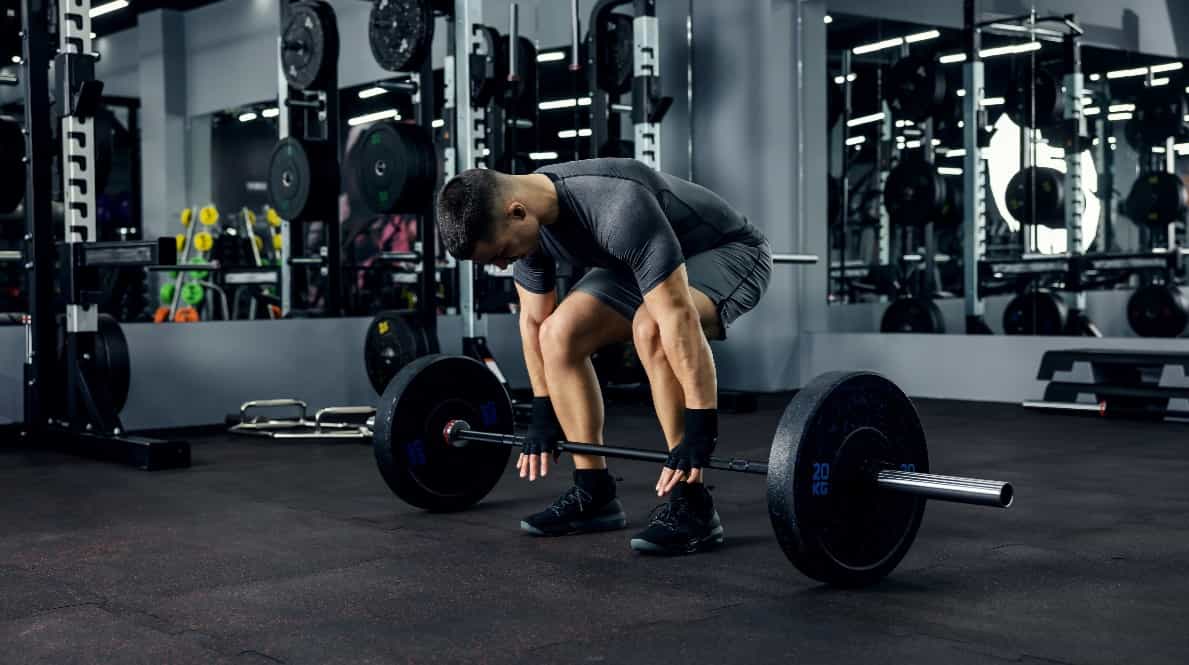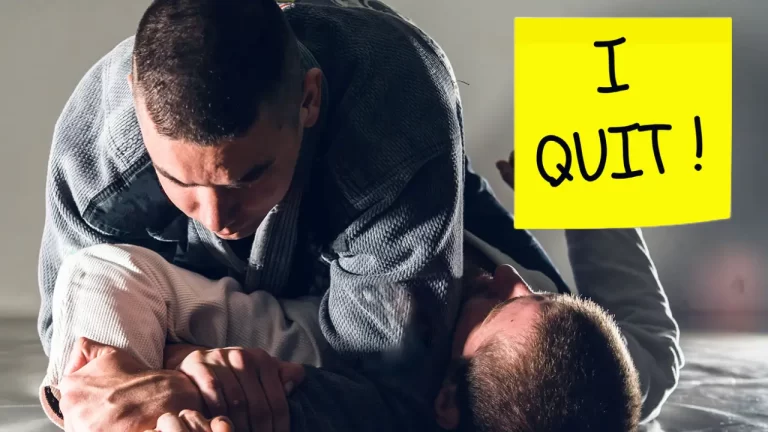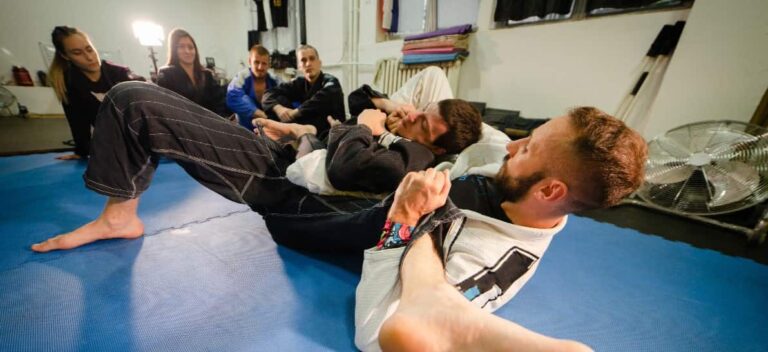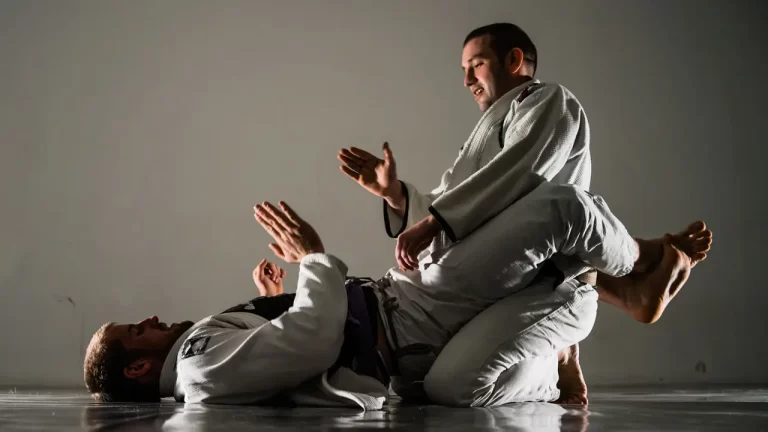The Best Strength And Conditioning Secrets For BJJ
Brazilian Jiu-Jitsu is hard on your body, it is no different to any other combat sport. So this will be important information for your training moving forward.
In this article, we will discuss the reasons for you to engage in various forms of strength and conditioning to enhance your BJJ performance, as well as specific strength and conditioning program exercises to counteract the muscles that get overused in Brazilian Jiu-Jitsu.
Why You Should Lift Weights for BJJ

Although Brazilian Jiu-Jitsu is a martial art specifically made for smaller opponents to overcome large size and strength discrepancies, you will be facing other BJJ practitioners frequently, so this advantage is somewhat nullified when you go into BJJ practice every week.
You would be foolish to not think that having some sort of edge, won’t significantly improve your ability to perform.
Many elite BJJ athletes make the common mistake of overlooking their strength and conditioning training, and that’s unfortunate as it makes engaging in the sport of Jiu-Jitsu more fun, and less gruesome on your body over time.
A strong body will make you less prone to injuries that you would otherwise succumb to in the sport.
Weight training will create a barrier of muscle tissue surrounding your joints and bones. This is crucial as in BJJ training, you will have people constantly ripping at joints such as your shoulders, knees, and ankles.
The extra barrier of protection that will be achieved by improving your strength through weight training has many benefits.
Not only will you increase your strength which will make it much harder for your teammates to submit you in BJJ practice. You will also spend less time off the mats due to little aches and niggles, as well as improving your longevity in the sport.
You want to be doing this when you are 50 right? Then you MUST do strength training for BJJ, it isn’t negotiable.
Strength Training Guide for BJJ Practitioners

Get my ebook for free by joining my Martial Arts newsletter below
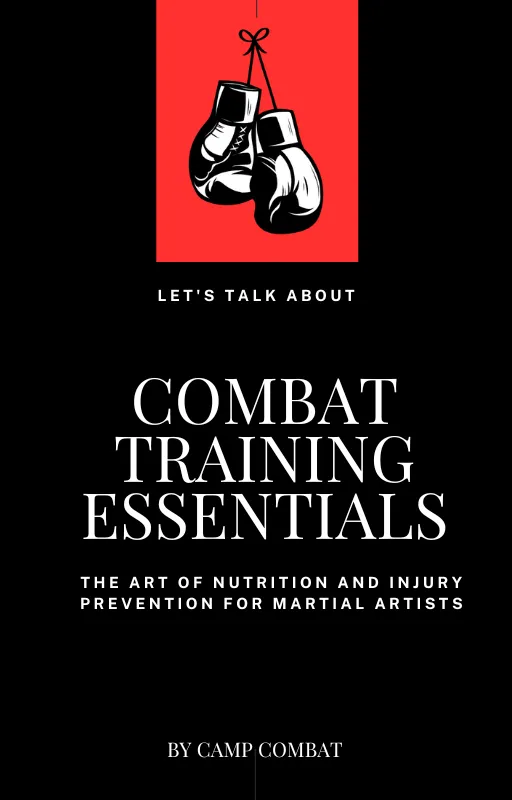
Master Conditioning, and Injury Prevention
Get the tools you need to optimize your performance on the mat and unleash your full potential.
Strength training is a vital aspect for martial artists, but it’s important to approach it differently than bodybuilders. We’re not aiming to become massive bodybuilders, we want a BJJ workout program that is tailored to our sport..
Instead, our focus is on making gradual and incremental improvements in overall strength without burning out.
Unlike bodybuilders who push their muscles to failure with high volume and intensity, this approach may not be suitable when combined with BJJ training or any combat sport.
The intensive nature of BJJ training already places significant stress on your nervous system, and injury prevention should be a priority while using strength training exercises as a supplement to your BJJ training.
During weightlifting sessions, it’s crucial to apply just enough stress to stimulate strength development and muscle growth while minimizing the risk of injury.
I recommend limiting yourself to no more than two sets per body part and keeping the intensity at a maximum of 60 – 70% of your one-rep max. This approach will help promote longevity in your combat career or activities while reducing the chances of overexertion.
You aren’t trying to kill yourself or go to full exhaustion in these strength training workouts, your goal is to stimulate growth. Save going all out for your BJJ classes.
For Brazilian Jiu-Jitsu athletes, 2-3 weightlifting sessions per week are generally sufficient.
Going beyond this frequency should be reserved for professional athletes who require additional training demands, if you are in your early to mid-20s, you could get away with more volume.
Remember, it’s always beneficial to consult with a qualified strength and conditioning coach or personal trainer who can tailor a program specific to your needs and goals.
In saying that we are all different and can handle a different amount of intensity based on age and your overall fitness level. I have found this framework to be best for those who have jobs, families, and other commitments.
Strength Training program For BJJ
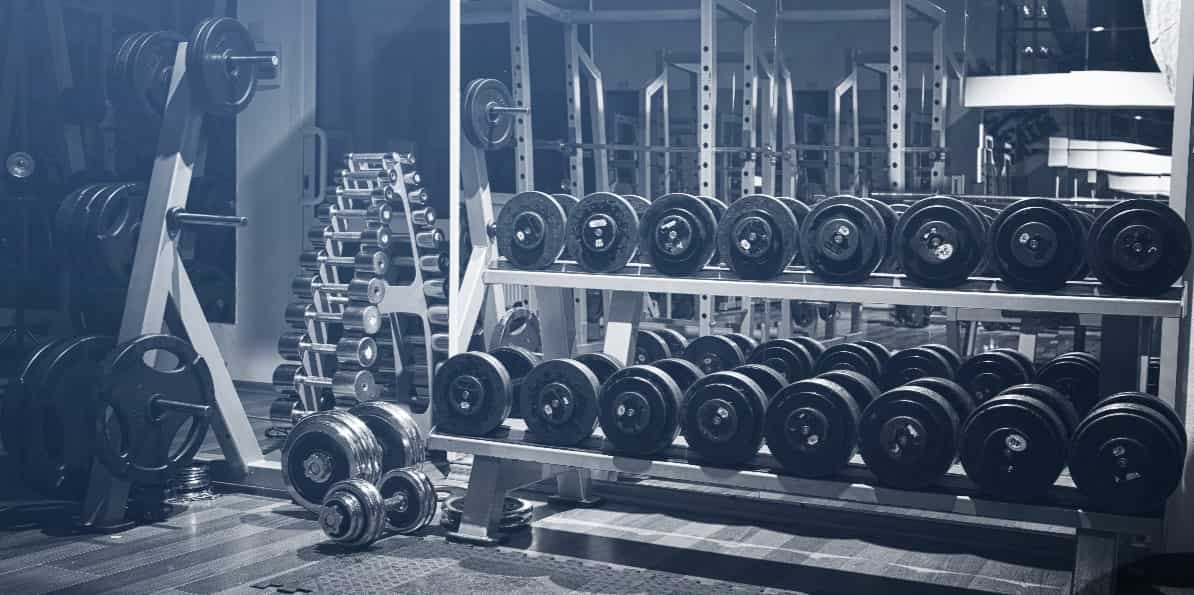
This is a good starter strength training program for BJJ athletes, and will not only factor in that you are already training in a demanding combat sport, but also have exercises to increase your tendon durability.
Strength training is a SUPPLEMENT to your BJJ training. 2 days a week of the right exercises is enough to get the gains you are after.
Remember we aren’t training for volume, we are training to leave a bit in the tank for your BJJ training which is your primary sport.
Day 1: Lower body strength and stability
Exercise 1: Squats
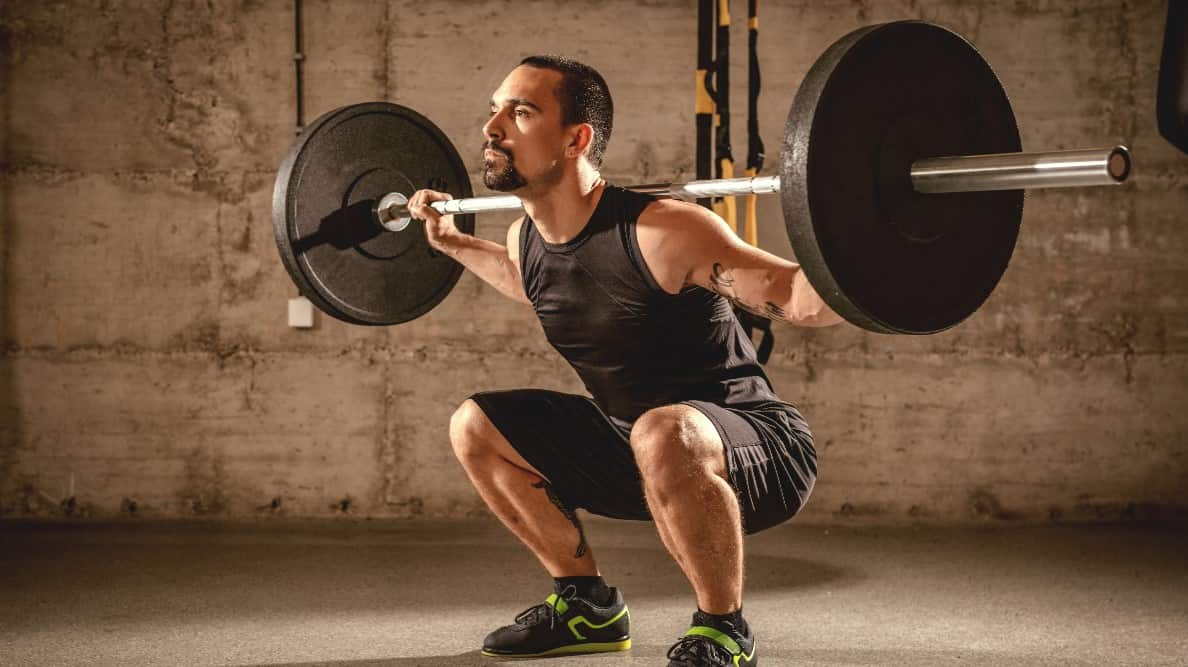
Exercise 2: Deadlift
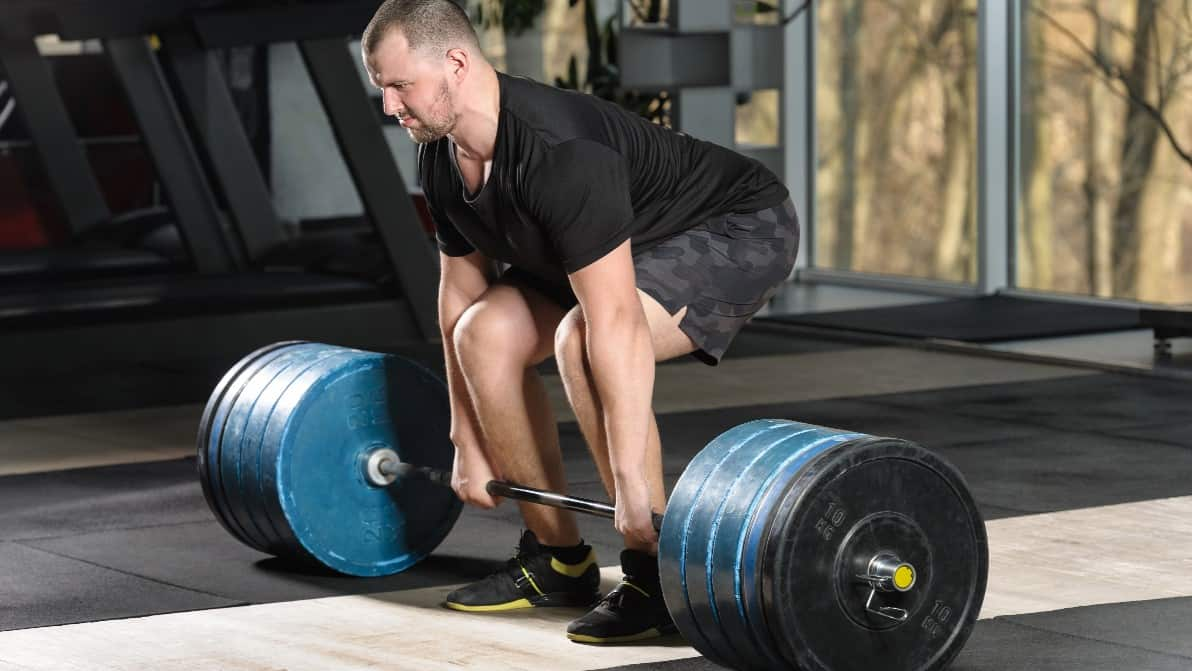
Exercise 3: Standing Tibialis Raise:
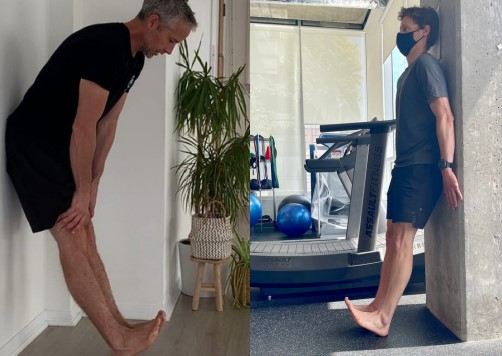
Strengthens the front muscle of the shin, which can help to prevent knee injuries.
Improving balance and coordination.
Stretching and lengthening the Achilles, tendon, and calf muscles.
Reducing pain in the shins, knees, and lower legs.
Exercise 4: FHL Calf Raise
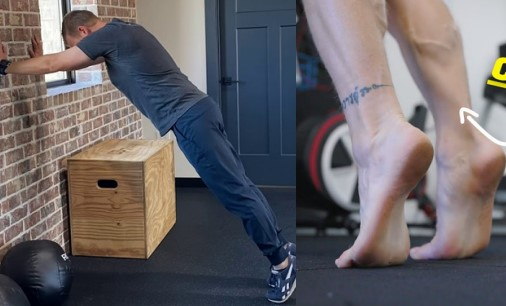
The FHL calf raise, and the standing tibialis raises help strengthen the neglected muscles and connective tissue that surround your knee caps.
I am one of the very few at my BJJ gym without any knee problems and I credit it to these unconventional leg exercises that have made my knees incredibly strong due to the extra support.
Day 2: Upper Body Strength Training
Exercise 1: Dumbbell Bench Press
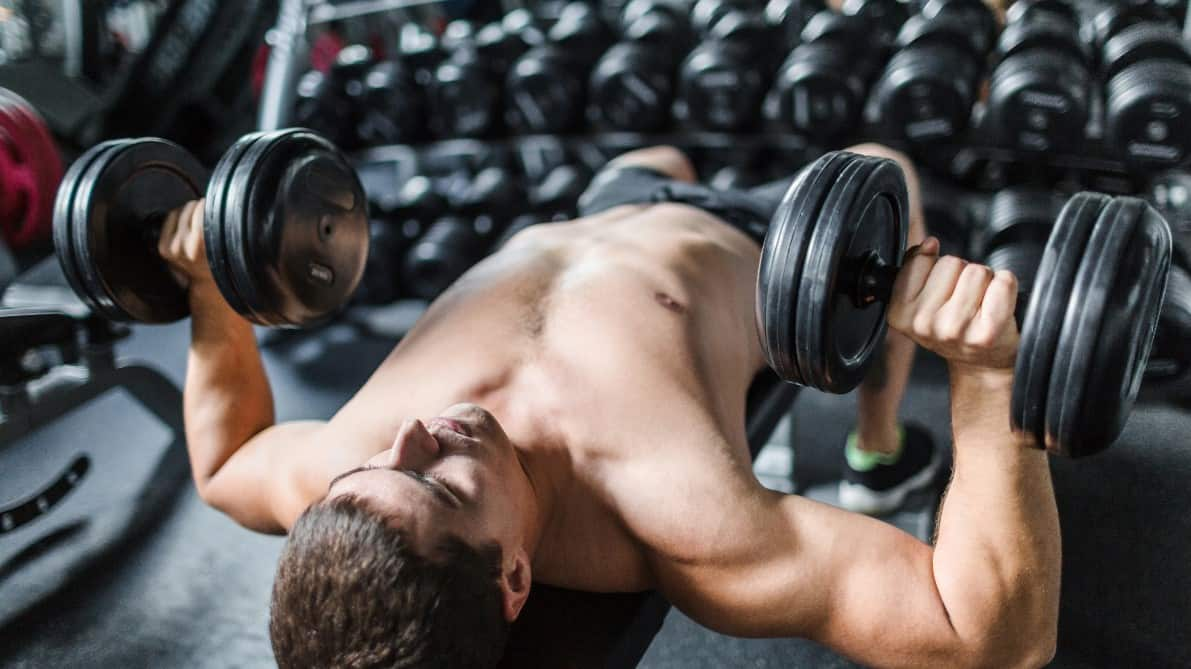
Exercise 2: Pull-ups or lat pulldowns
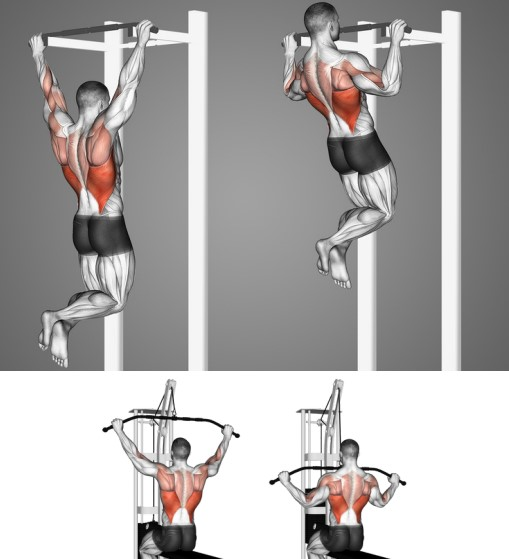
Exercise 3: Face pulls
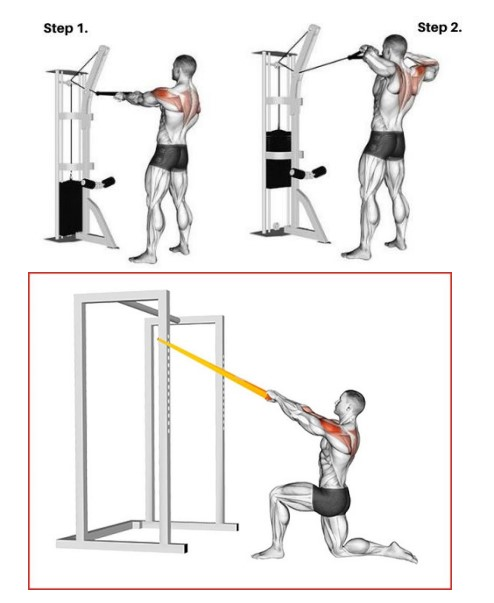
The face pulls help strengthen your rotator cuffs and rear deltoids, it will also correct any posture issues you have, or will likely develop due to an overuse of internal rotation in BJJ training.
Muscles that get overused in BJJ training
Some muscles get a bit more of a workout than others doing Brazilian Jiu-Jitsu, and they can sometimes feel like they’re working overtime. Consider adding exercises that counteract these overuse issues.
Here’s the lowdown on those hardworking muscles:
Arm and Hand Muscles (Grip and Forearm): BJJ involves lots of grabbing and holding onto your opponent’s clothing or limbs. That means your forearm and hand muscles, especially the ones that close your hands, can get pretty tired. This can lead to what’s known as “BJJ grip” or even sore forearms.
Neck Muscles: You’ll use your neck muscles to defend against chokes and keep your head in the right position. This can sometimes lead to a sore or stiff neck. The iron neck is a good solution for this, ontop of your strength program.
Shoulder Muscles (Rotator Cuff): All those arm movements and shoulder actions in BJJ can put some strain on your shoulder muscles, particularly the rotator cuff. This can lead to shoulder discomfort or even injuries if you’re not careful.
Back Muscles (Lats): When you’re pulling and holding positions in BJJ, your back muscles, especially the lats, do a lot of the work. Over time, this can leave your upper back or shoulders feeling tired. Stretching and lacrosse ball therapy in this area will help.
Thigh Muscles and Hips (Quadriceps and Hip Extensors): When you’re passing guard or holding top control, your thigh muscles and hips come into play. They can start feeling tired or strained.
Those hip muscles get a workout too, especially when you’re maintaining guard or sweeping your opponent. Using them a lot can lead to hip discomfort or tightness.
Lower Back Muscles: Keeping your posture and doing bridging movements can strain your lower back muscles if you’re not using proper technique.
Conditioning Circuit workouts for BJJ

These conditioning exercises take into consideration time constraints. You have to work a job, eat well, train BJJ, and keep strong on top of all of that! It’s a lot…
Here are 2 options, and you can alternate these conditioning exercises every week as you see fit.
Conditioning workout number 1
Burpees: 10-15 reps
Medicine Ball Slams: 10-15 reps
Kettlebell Swings: 10-15 reps
Mountain Climbers: 20-30 reps (counting each leg)
Jumping Lunges: 10-15 reps per leg
Perform each exercise in a circuit format, moving from one exercise to the next with minimal rest. Complete the circuit for a specific number of rounds or a set duration.
Rest for 1-2 minutes between each circuit, and aim to complete 3-5 rounds.
Conditioning workout number 2
Tabata Intervals:
Tabata training is a high-intensity interval training method that involves 20 seconds of work followed by 10 seconds of rest.
Choose four exercises and perform each exercise for 20 seconds with maximum effort, followed by 10 seconds of rest.
Repeat for a total of 8 rounds (4 minutes).
Rest for 1-2 minutes between each Tabata set.
Exercise 1: Battle Ropes
Exercise 2: Box Jumps
Exercise 3: Sledgehammer Strikes on a Tire
Exercise 4: Sprawls (Mimicking takedown defense)
Designing a strength training program For BJJ

Here are some key principles and exercises to consider when designing a strength training program for BJJ athletes:
Compound Movements: Focus on compound exercises that target multiple muscle groups and mimic the movements used in BJJ. These exercises include squats, deadlifts, bench presses, overhead presses, pull-ups, rows, and lunges, etc.
Compound movements build overall strength, improve coordination, and enhance functional movement patterns.
Periodization: Implement a periodization plan that includes different phases to address strength, power, and endurance. This helps prevent plateaus and optimizes performance gains.
Periodization typically involves dividing training into specific blocks, such as hypertrophy (muscle growth), strength, and power phases.
Core Stability: Core strength and stability are crucial for BJJ athletes to generate power, maintain balance, and prevent injuries.
Include exercises like planks, Russian twists, medicine ball throws, and stability ball exercises to develop core strength and stability.
Explosive Movements: BJJ training requires explosive power for movements, incorporating plyometric exercises like box jumps, medicine ball slams, jump squats, and explosive push-ups to improve power output and enhance fast-twitch muscle fiber activation.
Functional Movements: BJJ athletes should focus on exercises that mimic the movements and demands of the sport. This includes rotational exercises like woodchoppers and cable twists, as well as exercises that target the hips, glutes, and shoulders for enhanced mobility and stability.
Strength Endurance: Develop strength endurance to maintain performance over the course of a fight. This involves high-repetition sets, circuit training, and interval training using lighter weights or bodyweight exercises.
It helps improve muscular endurance, conditioning, and the ability to sustain power output during prolonged bouts.
Injury Prevention: Include exercises that strengthen the muscles and joints prone to injury in BJJ training, such as the knees, shoulders, and lower back.
Incorporate exercises like Bulgarian split squats, shoulder stability exercises, and glute bridges to enhance stability and reduce the risk of injuries.
Consistency and Progression: Consistency is key when it comes to strength training. Develop a regular training schedule and gradually progress the intensity, volume, and complexity of exercises over time to continue challenging the body and making progress.
Overlooked Aspects Of A BJJ Strength and Conditioning Program
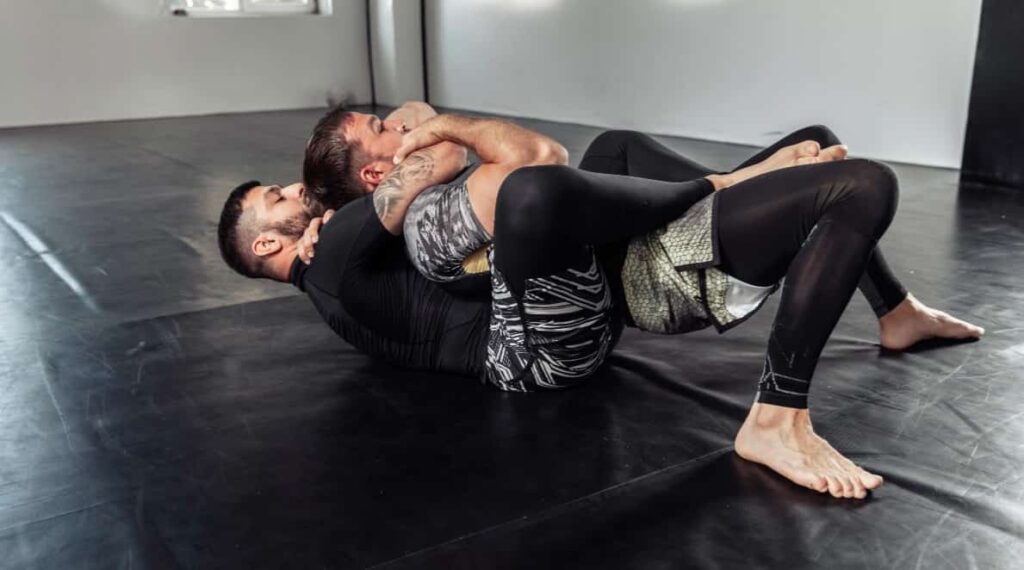
The two often most overlooked aspects of a BJJ strength training program are both stretching and massage therapy, let’s discuss why these are important:
Massage therapy: Foam rolling as well as lacrosse ball therapy should be taken seriously. lacrosse balls will hit all of the places a foam roller can not. It is fantastic for getting into all the hard-to-reach muscle fibers and really targeting problematic areas causing muscle imbalances and pain.
Using a lacrosse ball for self-massage therapy can be an effective and convenient way to relieve muscle tension, promote relaxation, and improve mobility. Here are some tips on using a lacrosse ball for self-massage:
Choose the Right Ball: Select a standard-sized lacrosse ball, which is firm and durable. It should be dense enough to provide sufficient pressure but not too hard that it causes discomfort or pain.
Stretching: It is imperative if you are training frequently to stretch every time before you train, ideally after you train as well.
You might get away with this at a young age for some time, but as you get older you will not recover as effectively as you did before, and if you want to train for a long time, even into your 50s and 60s you need to stretch and ideally incorporate yoga into your routine.
This is not negotiable, you want your body to perform well for decades to come. you must think of the long game here. if you look after your body it will look after you.
Stretching plays a vital role in combat sports as it offers several benefits that can enhance performance, reduce the risk of injuries, and aid in recovery.
Here are some benefits highlighting the importance of stretching in combat sports:
Improved Flexibility and Range of Motion: Stretching helps improve flexibility by increasing the length and elasticity of muscles and tendons.
This increased range of motion allows fighters to execute techniques with better form and efficiency, enabling them to move more fluidly during training and competition.
Injury Prevention: Regular stretching routines can help reduce the risk of injuries when training BJJ. By improving flexibility, stretching enhances joint stability and reduces the likelihood of muscle strains, pulls, and tears.
It also helps to correct muscle imbalances and posture issues that can lead to chronic pain or injuries.
Enhanced Performance: Increased flexibility and range of motion directly impact performance in combat sports.
Fighters with better flexibility can generate more power, maintain better balance, execute kicks and strikes with precision, and defend against opponents more effectively.
Stretching also aids in muscle recovery, reducing post-training soreness and stiffness.
Warm-up and Cool-down: Stretching is an essential component of warm-up and cool-down routines. Prior to training BJJ or competition, do dynamic stretches that help to warm up muscles, increase blood flow, and prepare the body for intense physical activity.
After training, static stretches can be performed to cool down the body, promote muscle relaxation, and aid in the removal of metabolic waste products.
Components of a BJJ Strength and Conditioning Program
The key is to make your BJJ training program fit your goals and what you can do. You start from your current capabilities and progressively improve upon them every passing week.
These are the core components of a good strength and conditioning program.
Warm-Up and Getting Limber:
Do some dynamic stretches to wake up your muscles and joints.
Move your joints around to improve their flexibility.
Roll a foam roller over your muscles to loosen them up.
Getting Strong:
Lift weights, do squats, deadlifts, and bench presses to get stronger.
Do exercises like push-ups, pull-ups, and bodyweight squats to build your muscles.
Don’t forget to work on your core with stuff like planks and leg raises.
Try exercises that mimic BJJ moves, like bridging and shrimping.
Cardio Work:
Do short bursts of intense exercise followed by rest to improve your fitness (HIIT).
Go for runs or bike rides to build up your stamina.
Practice drills that mimic what you do in BJJ to get in shape for it.
Flexibility and Moving Better:
Stretch your muscles after working out to make them more flexible.
Try yoga or mobility classes to improve your balance and movement.
Work on being more flexible in BJJ positions like guard and side control.
Balancing Act:
Do exercises that help you stay balanced and coordinated, like standing on one leg.
Practice drills that make you move quickly and change direction (agility drills).
Work on balance and coordination exercises that relate to BJJ.
Explosive Power:
Do things like jumping on boxes, doing explosive push-ups, and tossing medicine balls.
Olympic lifts can help you explode with strength but can be a risky exercise.
Recovery and Staying Flexible:
After your weight training workout, stretch to help your muscles recover.
Use tools like foam rollers or massage sticks to work out muscle knots.
On rest days, go easy with activities like swimming or a leisurely walk.
Planning for Success:
Change up your training routine over time.
Start with basic stuff and gradually make it harder to keep improving.
Listen to your body to avoid pushing it too hard and getting hurt.
Planning and Progressing Your BJJ Strength and Conditioning Program
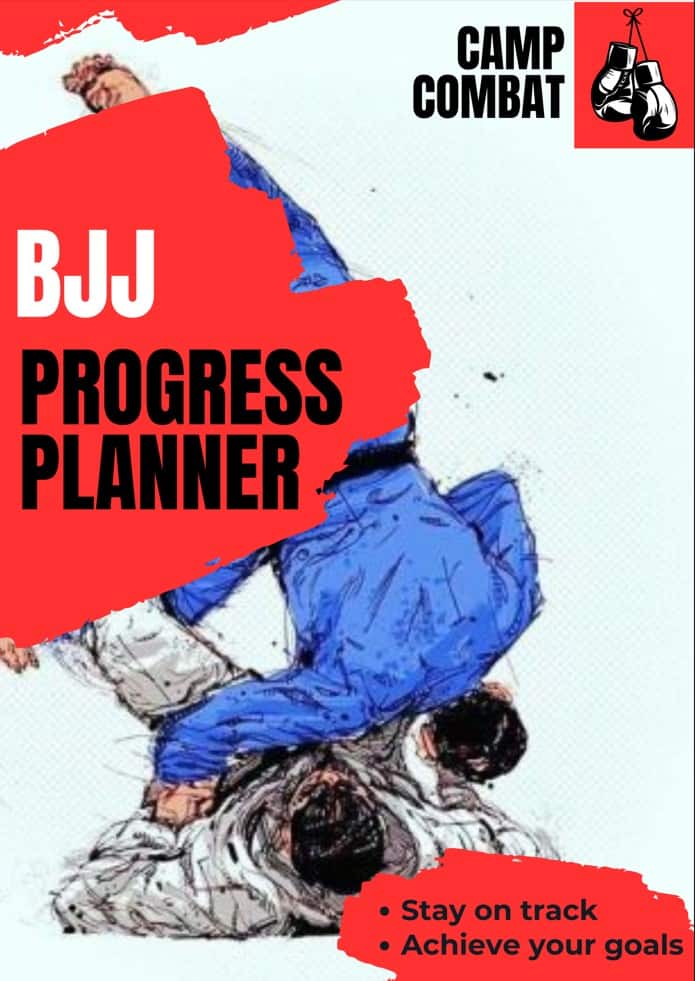
Supercharge Your Progress.
Gym Weightlifting Log: Whether you’re lifting more weight or aiming for more reps, this log will help you track your progress in the gym to enhance your strength and conditioning.
You want to track your progress and our BJJ Progress Planner is designed to break down your strength goals into manageable weekly targets, which then influence your monthly and yearly outcomes.
This will not only help you level up your BJJ performance but help you keep well organized, making your goals more achievable.
Whether you’re lifting more weight or aiming for more reps, this planner log will help you track your progress in the gym to enhance your strength and conditioning.
BJJ and Weight Training On The Same Day
You can absolutely do your weight training on the same day as your BJJ training, but keep in mind that it might be a lot for your body to handle if the BJJ class coming up is a more intense and physically demanding one.
That’s why the load and rep ranges for weight training I have given here are on the lower end. It can still be done and you shouldn’t be in a situation where you are overtraining, but your body might need a few weeks to adjust to the training demands.
Like anything, listen to your body.
Barbells or Kettlebells for BJJ?
This is entirely dependent on your personal preferences when you lift weights. Any injuries you posses may dictate what tool you are using to get the job done here also.
I have a bicep tendon tear and a labrum tear in my right shoulder, so I find using a kettlebell to perform my squats and certain exercises to be more efficient and keep me pain free due to the position of the shoulders when executing the techniques.
Do whatever works for you as you get a similar bang for your buck.
Olympic Lifts for BJJ?
I haven’t seen many BJJ fighters perform these lifts at BJJ training or as part of a strength and conditioning program as a BJJ athlete.
Now that’s not to say that you shouldn’t, but this is an entirely new skillset all together and will take you a long time to master.
The risk of injury, if you aren’t performing the movements correctly, is also relatively high compared to traditional barbell weight lifting, so I think you should stay clear of it unless you know what you are doing.
In Conclusion
If you’re all about getting better at Brazilian Jiu-Jitsu and making sure you stick with it for the long haul, then setting up BJJ strength training programs is a must.
As a BJJ athlete, you know it can be a tough gig for your body, so a solid training plan can make it more enjoyable and less of a physical grind over time.
Strength development brings a bunch of perks, like making your muscle groups stronger, giving your joints some protection, and keeping you in the BJJ game for the long run.
Core stability exercises and injury prevention drills are also big players. These keep you sturdy and protect those areas of your body that tend to get hurt in BJJ.
Your BJJ journey is like a marathon, not a sprint. Take care of your body with a BJJ workout plan, stay on top of your strength and conditioning, and listen to what your body’s telling you.
That’s the recipe for rocking Brazilian Jiu-Jitsu for the long haul.
FAQ’S
Do you need strength and conditioning for BJJ?
Strength training is recommended as a supplement for most people these days who train in BJJ. You do not need it, but it will help you prevent injuries on the mat as well as keep a strong and able body as you mature and age.
How do you combine strength training and BJJ?
You need to combine strength training with BJJ in a way that takes into consideration the stress that will be placed on your nervous system when doing 2 physically demanding forms of exercise so you don’t overtrain.

